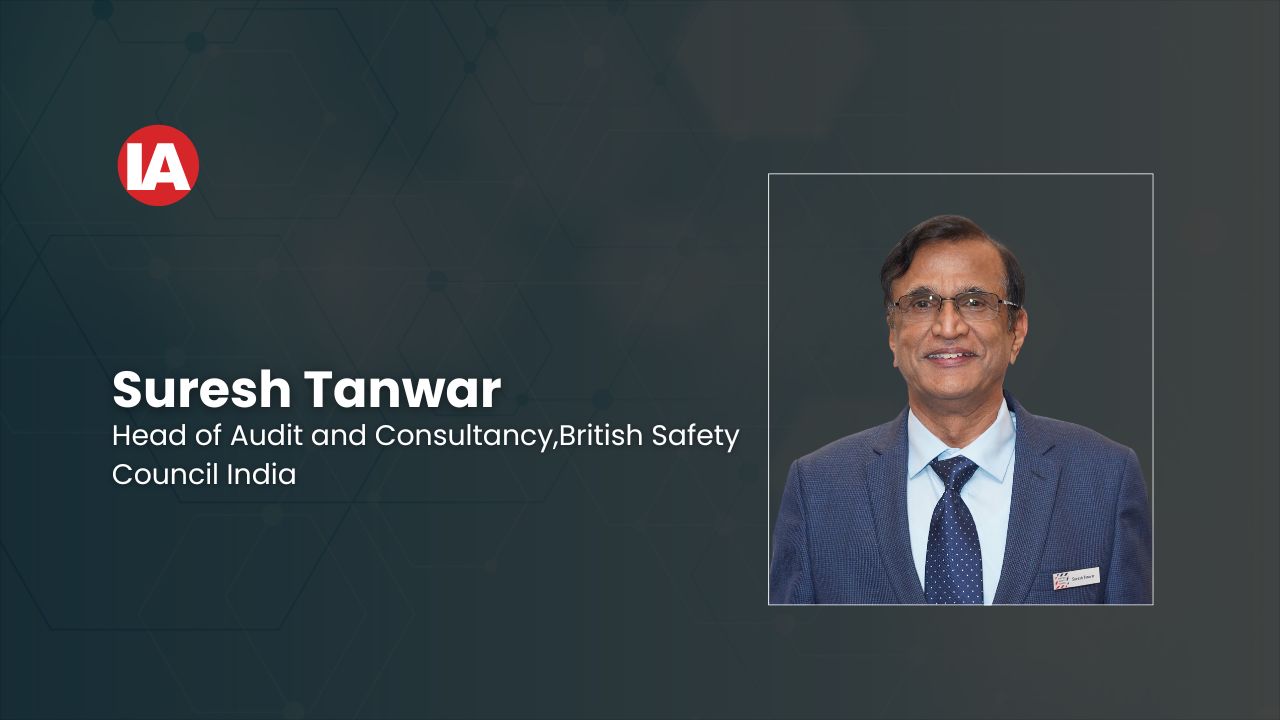
How Prioritising Safety Drives Manufacturing Growth and Efficiency?
"Safety is more than compliance—it's a business strategy," says Suresh Tanwar, Head of Audit & Consultancy (India) at the British Safety Council. As India’s manufacturing sector expands under government initiatives, the urgent need to embed safety into workplace culture becomes paramount—not just for compliance, but as a catalyst for productivity, profitability, and long-term growth."
![[object Object]](https://admin.industrialautomationindia.in/storage/articles/article-cHRkjoAbjszuLaiSVNpkAG9CVQ8CJfMuDUxcSrjU.jpg)
Safety investment is not only compliance, it's a business strategy that pays organisations and employees, says Suresh Tanwar.
The Budget of 2025-26 reaffirmed the government's commitment to spurring India's manufacturing sector, moving ahead with such initiatives as Make in India and the Production Linked Incentive (PLI) scheme. Manufacturing already contributes almost 17% of the country's GDP, and the sector is on course for greater expansion. But as the sectors expand and job creation picks up, the imperative of worker safety increases even larger, a consideration which continues to remain ignored in the majority of manufacturing units.
A growing problem: Factory safety in India
Despite policy and technology advances, India still faces a grave safety situation in its factories. DGFASLI reports show that, on average, three workers are killed and 11 injured daily in the registered factories. The figures could be more for the unorganised sector where norms of safety are either weak or non-existent. With nearly 48,000 on-the-job deaths annually, the need to place safety deeply into the work culture cannot be avoided.
One of the greatest challenges is the lack of proper safety training, especially in small units and informal organisations. Employers with high rates of employee turnover typically sacrifice formal safety training for wage workers. This results in unsafe working environments where the chance of accidents and health risks is extremely high.
In addition to physical harm, most employees suffer long-term health problems due to poor working conditions. They suffer from respiratory diseases like silicosis, musculoskeletal injuries, and other long-term health problems. The combined effect of such problems is not only harmful to individual workers but also destabilising to the overall business sphere.

Safety as a smart business strategy
Safety investment is not only compliance, it's a business strategy that pays organisations and employees. Accidents cause production delays, medical expenses, compensation payouts, and legal problems. They also decrease employee morale and harm the reputation of a firm. On the other hand, a strong focus on safety increases production efficiency and improves a firm's competitiveness as an employer.
When employees feel safe, they're more productive, more focused, and more engaged. A safety culture builds and retains quality employees, and businesses that prioritise good safety are more likely to expand profitably and stay away from regulatory or legal trouble.
Establishing a safety-first work environment
Creating a safe work environment is not a matter of providing helmets and gloves. It is a matter of creating a culture in which everyone, as a shared responsibility, takes care of safety. Leadership plays a central role in this. Managers must model themselves, encourage frequent safety training, conduct feedback sessions, and encourage reporting of hazards without fear of accusation.
Behavioral safety programs, where employee behaviors are monitored and changed through coaching, can reduce dangerous behavior on the job. Normal safety inspections also point to areas of possible concern and guide enhancements in training, equipment, or processes.
Effective safety programs are dynamic and ongoing. They have to respond to new hazards, operations, and technologies that become available. Being sensitive to physical and emotional well-being and creating a safety culture of open discussion of safety concerns helps to build a more resilient, more responsible workforce.
The way forward
As India aims to become a global manufacturing leader, concern must be as much for safety as for expansion. A strong safety system is not a barrier to progress, it's what enables sustainable, long-term expansion. With careful planning, companies can protect their most valuable asset, their workforce, and establish a reputation for responsibility and excellence in the global marketplace.
Suresh Tanwar is with BSC (British Safety Council) as Head of Audit & Consultancy (India). He is responsible for smooth deliveries at the clients’ end on health and safety audits, trainings, and consultancies through BSC Associates ensuring quality assurance of the deliveries. He plays an active role in creating new products and services interfacing with the BSC UK Technical team.
Prior to joining the British Safety Council, he was Chief – Group Safety & Health with Tata Group. He is a Mechanical Engineer and a qualified Safety professional and has had career stints in both – large Indian conglomerates and leading multinational corporations which include heading Health & Safety in Tata Motors, Tata Chemicals, Johnson & Johnson, Castrol – British Petroleum & Essar Steel.